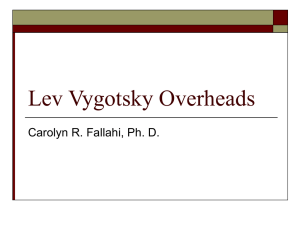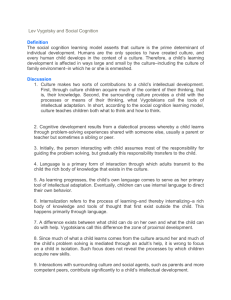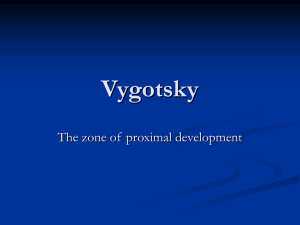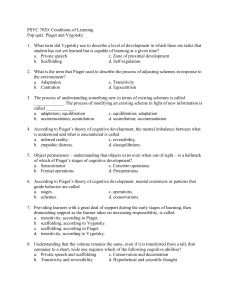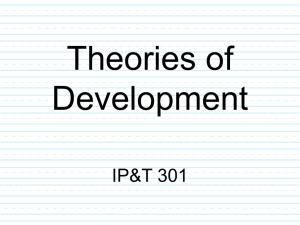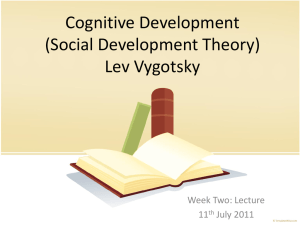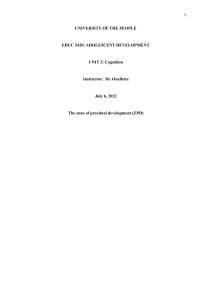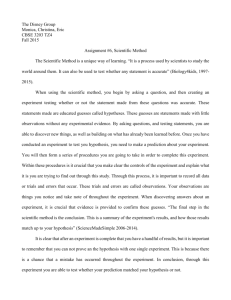Vygotsky's Scaffolding Assignment: Child Development ECE 102
advertisement
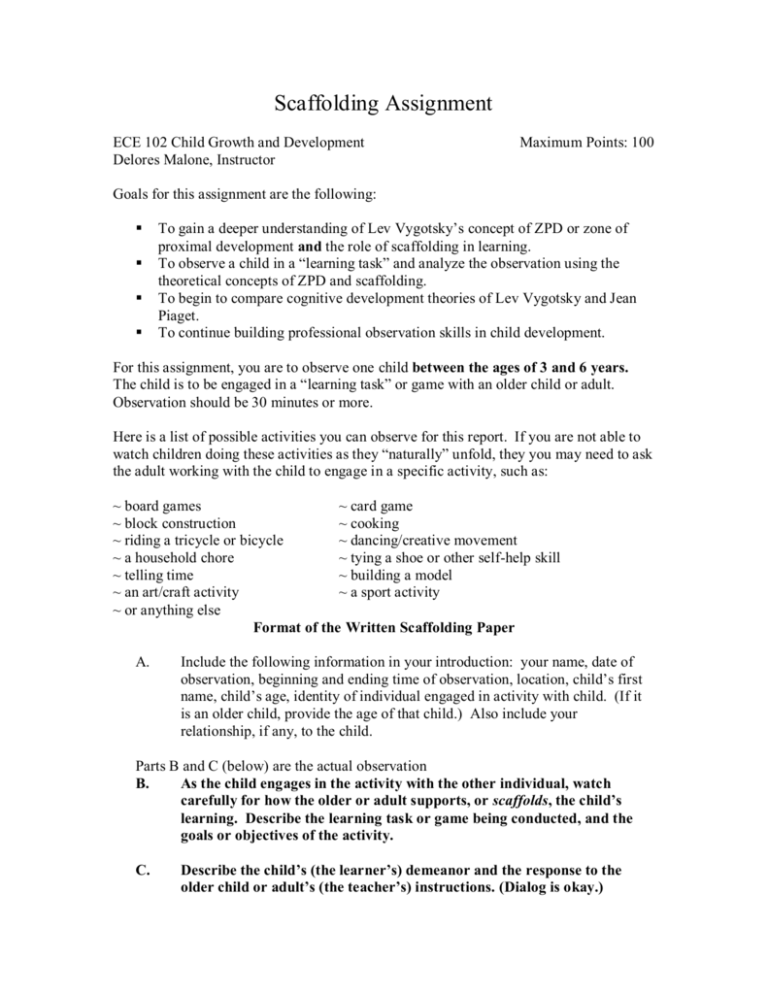
Scaffolding Assignment ECE 102 Child Growth and Development Delores Malone, Instructor Maximum Points: 100 Goals for this assignment are the following: To gain a deeper understanding of Lev Vygotsky’s concept of ZPD or zone of proximal development and the role of scaffolding in learning. To observe a child in a “learning task” and analyze the observation using the theoretical concepts of ZPD and scaffolding. To begin to compare cognitive development theories of Lev Vygotsky and Jean Piaget. To continue building professional observation skills in child development. For this assignment, you are to observe one child between the ages of 3 and 6 years. The child is to be engaged in a “learning task” or game with an older child or adult. Observation should be 30 minutes or more. Here is a list of possible activities you can observe for this report. If you are not able to watch children doing these activities as they “naturally” unfold, they you may need to ask the adult working with the child to engage in a specific activity, such as: ~ board games ~ card game ~ block construction ~ cooking ~ riding a tricycle or bicycle ~ dancing/creative movement ~ a household chore ~ tying a shoe or other self-help skill ~ telling time ~ building a model ~ an art/craft activity ~ a sport activity ~ or anything else Format of the Written Scaffolding Paper A. Include the following information in your introduction: your name, date of observation, beginning and ending time of observation, location, child’s first name, child’s age, identity of individual engaged in activity with child. (If it is an older child, provide the age of that child.) Also include your relationship, if any, to the child. Parts B and C (below) are the actual observation B. As the child engages in the activity with the other individual, watch carefully for how the older or adult supports, or scaffolds, the child’s learning. Describe the learning task or game being conducted, and the goals or objectives of the activity. C. Describe the child’s (the learner’s) demeanor and the response to the older child or adult’s (the teacher’s) instructions. (Dialog is okay.) D. What is Lev Vygotsky’s Cognitive Theory? What is the meaning and purpose of scaffolding? (Be sure to cite the reference or references [APA style] where you obtained the above information.) In your observation, describe what “the teacher” does to scaffold the learner. What kinds of questions and comments were used during the activity? In what other ways did “the teacher” scaffold? E. What does Vygotsky mean by the zone of proximal development? (Again cite the reference where you obtained this information.) Based on your observation, explain what you believe is the child’s ZPD for this particular activity? Use the information in the textbook, class, or internet to guide your determination. F. Comparison of Theories 1. 2. 3. G. Compare Vygotsky’s view of the child’s construction of knowledge (how children learn) to that of Piaget’s view of the same. (You first need to explain Piaget’s theory cognitive theory.) How can your knowledge of both Vygotsky and Piaget’s perspective benefit your interactions with young children and/or your work as a teacher? Give an example of two activities or circumstances (one Piagetian and one Vygotskian) in which you might use these theories with one child or with a group of children. Conclusion: 1. What new insights do you have at this point regarding young children’s cognition and learning? 2. What questions about scaffolding remain unanswered for you? This assignment is worth 100 points and should be 4-7 double-spaced pages in length. Points will be earned on the following criteria: Understanding of the required concepts and application of relevant course/text material. Adherence to assignment directions. Writing level, organization and structure, spelling and grammar. Cite at least 3 (three) references: (textbook, classroom notes, videos, internet, or periodicals) Include a reference page at the end of the paper. Use APA style to cite your references.

